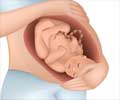- Nonepileptic motor phenomena in the neonate - (http://www.ncbi.nlm.nih.gov/pmc/articles/pmc2606074/)
- Transitional neonatal hypoglycemia - (http://dx.doi.org/10.1016/j.jpeds.2015.04.024)
- Hypoglycemia in the Newborn - (http://www.cincinnatichildrens.org/health/h/hypoglycemia/)
- Transient neonatal hyperinsulinemic hypoglycemia and neurological outcome: a case report - (http://www.ncbi.nlm.nih.gov/pubmed/21487374)
- Frequently asked questions (FAQ’s): Glucose estimation - (http://www.newbornwhocc.org/ontop-data/faq_s_glucose_estmation.pdf)
- Hypoglycemia in a Newborn Baby - (https://www.urmc.rochester.edu/encyclopedia/content.aspx?contenttypeid=90&contentid=p01961)
What is Neonatal Hypoglycemia?
Neonatal hypoglycemia is defined as a blood sugar level of less than 30 mg/dL in the first 24 hours after birth, and less than 45 mg/dL after that period, despite repeated glucose infusions for the treatment of the same.
Hypoglycemia in newborns could result in neuro-developmental problems if not recognized during neonatal screening in the first few days of life.
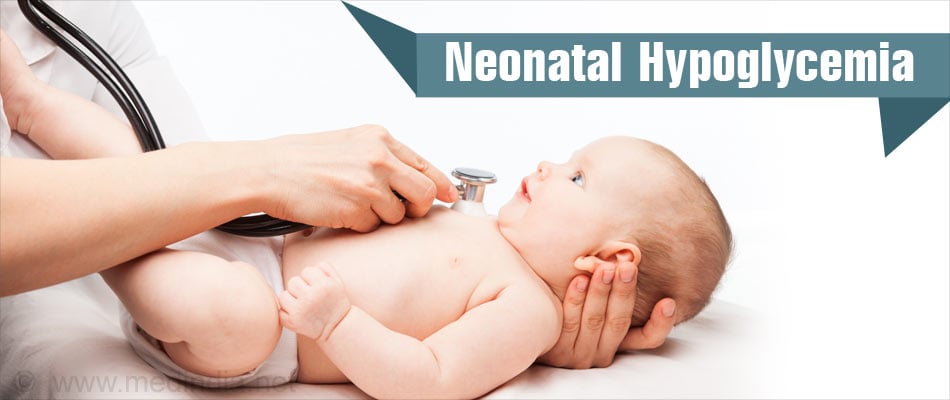
What are the Causes of Neonatal Hypoglycemia?
The newborn brain is dependent exclusively on glucose, and very less frequently on ketones and amino acids as the latter are produced in very minor amounts. The glucose production mechanisms are sluggish at birth. Hence, any disturbance either in the production or utilization of glucose or in the external supply will lead to low blood sugar levels, resulting in neonatal hypoglycemia.
The main causes of hypoglycemia in neonates are enlisted:
1. Increased Utilization of Glucose:
- Infant of mother with diabetes during pregnancy (Gestational diabetes)
This condition leads to transient hypoglycemia in the newborn because the insulin levels in the baby are high as a consequence of the mother’s diabetes. The condition resolves by itself in a few days
- Erythroblastosis, where the baby has immature red blood cells. Babies with erythroblastosis may suffer from hypoglycemia
- Islet cell hyperplasia, a condition where there is an increase in the number of pancreatic cells that produce insulin
- Beckwith Wiedemann syndrome, a genetic disorder
- Use of certain drugs during pregnancy to relax the uterus
2. Decreased Production/Stores:
- Prematurity
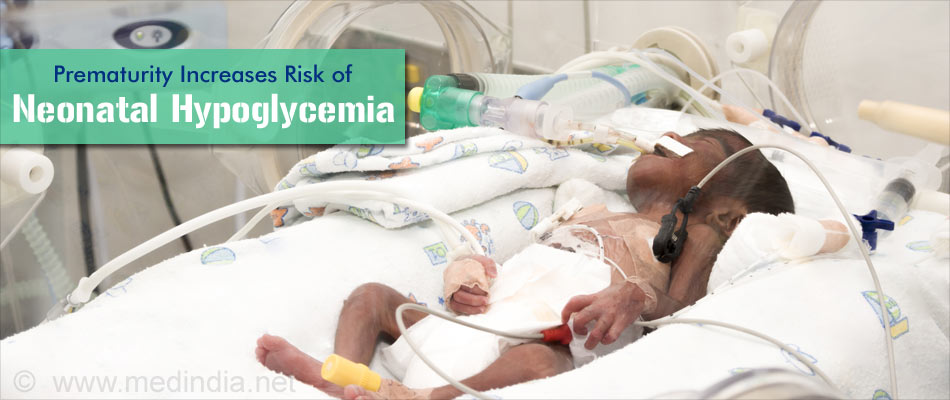
- Intrauterine growth restriction
- Inadequate calorie intake following birth
- Abrupt cessation of IV glucose
3. Perinatal Stress / Any Stressful Condition During Delivery:
- Infection
- Shock or extremely low blood pressure
- Asphyxia or difficulty with breathing
- Hypothermia or low body temperature
4. Blood Transfusion with blood that has low glucose content and the baby is not given additional glucose.
5. Defects in Carbohydrate Metabolism:
- Glycogen storage diseases leading to glycogen deficiency. Glycogen is a storage form of glucose
- Fructose intolerance
- Galactosemia (rare inherited condition in which the body is unable to metabolize galactose) and other associated metabolic disorders
6. Polycythemia, or excessive number of red blood cells
7. Other Miscellaneous:
- Congenital heart diseases.
- Abnormalities in central nervous system.
What are the Symptoms of Neonatal Hypoglycemia?
Hypoglycemic infants may not show obvious symptoms. So at-risk infants should be checked for hypoglycemia through routine glucose monitoring. Clinical features of neonatal hypoglycemia include jitteriness, fine tremors, irritability, lethargy, apathy, limpness, bluish discoloration of the skin, and seizures.
If not controlled early, the condition may lead to temporary cessation of breathing and even coma. The brain can get damaged resulting in blindness in the long run.
How do you Diagnose Neonatal Hypoglycemia?
Initially hypoglycemia should be suspected in all the at-risk cases and the same should be screened and managed accordingly. The following babies should be screened for hypoglycemia:
- Low birth weight infants (<2000grams)
- Preterm infants (£35 weeks)
- Small for gestational age infants (SGA): birth weight <10th percentile
- Infants of diabetic mothers (IDM)
- Large for gestational age (LGA) infants: birth weight >90th percentile
- Infants with Rhesus negative hemolytic disease (Rh positive babies born to Rh negative mothers, who may suffer from rupture of red blood cells)
- Infants born to mothers receiving treatment with terbutaline / propranolol / labetalol /oral anti-diabetes medications.
- Infants with morphological intra uterine growth restriction. This group includes neonates with birth weight between 10th to 25th and possibly up to 50th percentile, with features of fetal under-nutrition such as three or more loose skin folds in buttock region, overall decreased fat under the skin, and head to chest circumference difference of greater than 3 cm
- Any sick neonates such as those with decreased oxygen supply during delivery, high red blood cell count, infection or shock when they are in active phase of illness. The screening may be discontinued once their condition gets stabilized.
- Infants on total parenteral nutrition, that is, receiving nutrition through the veins.
Diagnosis of neonatal hypoglycemia is based on laboratory estimations of plasma glucose.
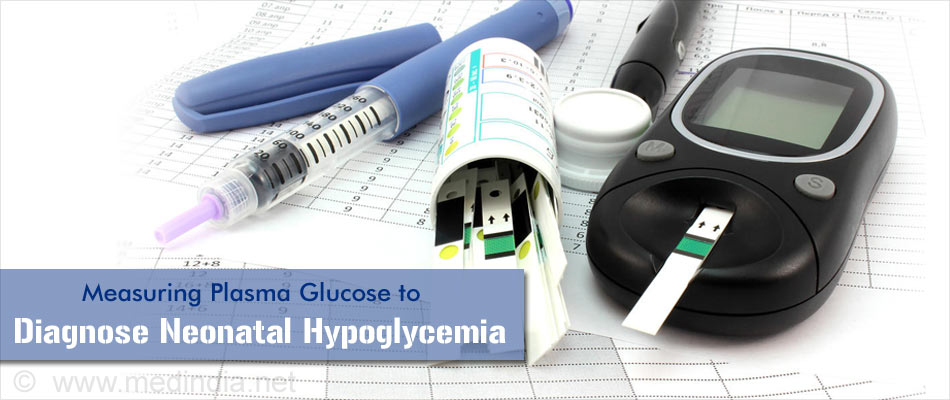
The estimation should be done based on the underlying cause:
- Infant of diabetic mothers: 1, 2, 4 and 6 hours of life.
- Preterm and small for gestational age infant: 1, 6, 12, 24, 36, 48 hours and third and fourth day.
- Infants with erythroblastosis fetalis: after exchange transfusion with blood intermixed with citrate phosphate dextrose.
How do you Treat Neonatal Hypoglycemia?
In asymptomatic cases: Give oral feed and recheck every 30 minutes. If the glucose level is still less than 40 mg/dL, then dextrose is administered in the vein to increase the glucose levels.
In symptomatic cases, a higher dose may be subsequently needed. If the glucose levels continue to be low, the baby is given hydrocortisone, a corticosteroid, by injection.
Glucose level should be rechecked after 20-30 minutes and hourly until stable.
In the emergent situations, glucagon can be injected into the muscle till glucose is made available.
How do you Prevent Neonatal Hypoglycemia?
The below principles apply to all neonates; it is important to recognize an infant at risk of hypoglycemia and initiate strategies from birth to assist with prevention.
Prevention strategies include:
- Skin-to-skin contact at birth and an early breastfeed within the first hour (unless the baby requires immediate transfer to the Special Care Nursery (SCN).
- Ongoing skin-to-skin contact to control the temperature of the baby and promote frequent breastfeeds.
- Teaching mothers to recognize and respond to early feeding cues (these may not be present in the ‘at risk’ infant).
- Frequent feeds at least 3 hourly.
- Mothers must be supported with breastfeeding at each feed and the quality of each feed should be assessed. Correct positioning and attachment must be established to ensure efficient milk transfer.
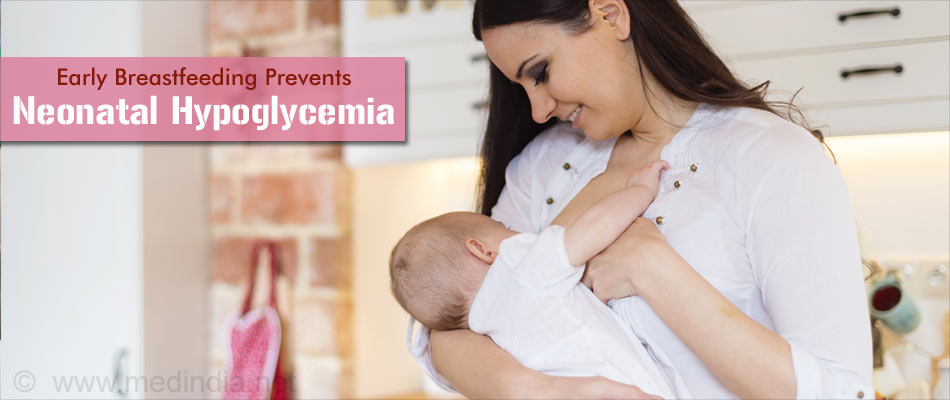
- If feeding at the breast is not achievable, the mother must be encouraged to hand express frequently and the expressed breast milk (EBM) may be given to the baby unless the baby cannot take anything orally for another medical reason.
- All preventative care must be discussed with the parents.
Health Tips
The kangaroo mother care protocol with close contact of mother and baby and exclusive breast-feeding should be practiced for preterm babies unless otherwise specified, for the treatment and prevention of neonatal hypoglycemia.





